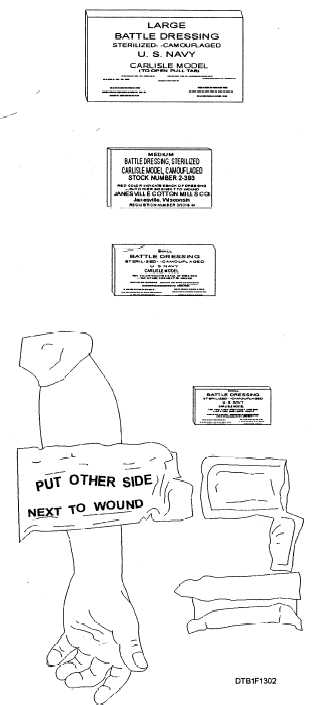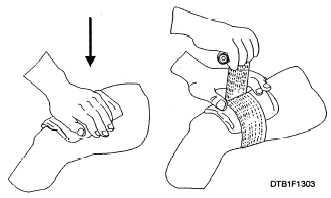
Figure 13-2. - Battle dressings.
contamination, and to prevent further injury to the wound.
When the dressing is in place, treat the casualty for shock and complete the U.S. Field Medical Card, DD Form 1380. In cases of severe hemorrhage, do not worry about the dangers of infection. Although the prevention of infection is important, your main concern is to stop the flow of blood. If there is no material available, simply thrust your hand over the wound.

Figure 13-3. - Direct pressure to control bleeding and application of a roller bandage.
ELEVATION. - Elevating or raising an injured limb above the level of the heart will help to control bleeding. Elevation should be used together with direct pressure (fig. 13-4). If you suspect a fracture, do not elevate a limb until the fracture has been splinted and you can be reasonably certain that elevation will cause no further injury. Use a stable object to maintain elevation.
PRESSURE POINTS. - If direct pressure and elevation fail to control serious external bleeding, try to control it by applying pressure to the appropriate pressure point.

Figure 13-4. - Combination of direct pressure and elevation.
Continue Reading